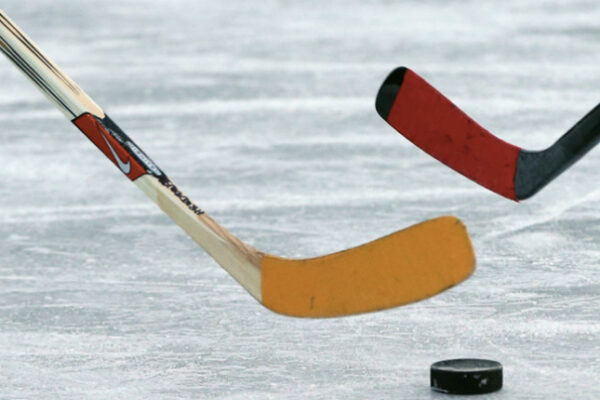
The electronic hockey puck
Augmenting television pictures with overlays is used on (American) football broadcasts, showing the line of scrimmage and the first-down line. Although a relatively recent innovation, they have become indispensable. Similar real-time, dynamic overlays are now used in most sports and even specialized events such as the America’s Cup race, where they mark the course and also show the trajectory of each vessel, which is very useful for such as “unmarked” field of action.
Sportvision Inc., the company which developed the football system, began with a first project which was a market failure. That system made the fast-moving, hard-to-see hockey puck appear as a glowing red object on TV, along with a trailing line to show the path. Although fans hated it and it was soon dropped, it taught the company a lot and also got the attention of football league management, who asked if an overlay was possible for their sport. The success and fast adoption of this second attempt at smart overlays in real time is a case study in learning from your failures, the importance of persistence in pursuit of success, and leveraging failures for future success.
Now, Sportvision is returning to hockey with a sensored, IR-emitting puck which will help report factors such as acceleration, speed, and other factors to camera-based nodes. In addition to the pucks, the players are being outfitted with multiple IR emitters which will be used to determine their speed, motion, and time on the ice.

The IR-emitting NHL puck has the same size, weight, and resilience of a standard puck, but also incorporates electronics but with details unknown.
The system requires about ten video cameras paced around the rink. It’s a complicated setup demanding lots of processing power, as it deals with a fast-moving sport having random player trajectories, player crashes, and line-of-sight blockages. Unfortunately, there’s very little technical information available on the system details, but it is being field-tested now at some professional games.
In some ways, this level of sophistication is a combination of “IoT meets hockey” and “big data transforms sports” scenarios. The sensors update at a rate of about 60 data points per second for the puck and 10 for each player. The distilled data will be used for all sorts of analytics and lead to micro- and macro-analysis of every player and team move, and more. It will also likely lead to increased calling out of meaningless statistics by the play-by-play announcers, but that’s another story.
When you think about this design and the constraints, it does make you wonder about how these engineers accomplished it. Consider the puck, since that’s the most constrained part of the system, and can’t use off-the-shelf hardware, unlike other parts of the overall system which rely mostly on cameras and processors. It has to have the same dimensions, weight, and feel of a standard puck. It obviously takes a severe beating, and must withstand being accelerated to over 100mph (160 km/hr) in a fraction of a second, corresponding to several thousand g.
In addition, the puck’s circuitry must not be damaged at temperature at which the rubber-like material of the puck is vulcanized to give it the needed hardness, between 150oC and 200oC depending on the manufacturing process. Further, once it is encapsulated, there’s no option for internal access for test, evaluation, or repair; either it works or it doesn’t. The estimated cost of early-production pucks is about $200, and the goal is to drop this to about $50 in volume. Not only does this cost add up compared to a $3 puck, but game pucks are often tossed to fans as souvenirs, which would be a costly giveaway here.
I’d certainly like to know more about the design details and the team which made it happen. If anyone has information, contacts, or links, it would make a great story – if they are willing to talk.
Have you even been involved in a sensor situation comparable to this? How did it work out?
Bill Schweber, is an electronics engineer and author who has written for EE Times, was analog editor at EDN and prior to that worked in marketing communications for Analog Devices and was also editor of its technical journal.
This article first appeared on EE Times’ Planet Analog website.
Related links and articles:
Whatever happened to RFID, 3DTV?
Meeting the ‘Rugged Design’ Challenge
VCR era ends due to lack of chips – and demand
Gas discharge tubes: old protection in a new bottle
 If you enjoyed this article, you will like the following ones: don't miss them by subscribing to :
eeNews on Google News
If you enjoyed this article, you will like the following ones: don't miss them by subscribing to :
eeNews on Google News



